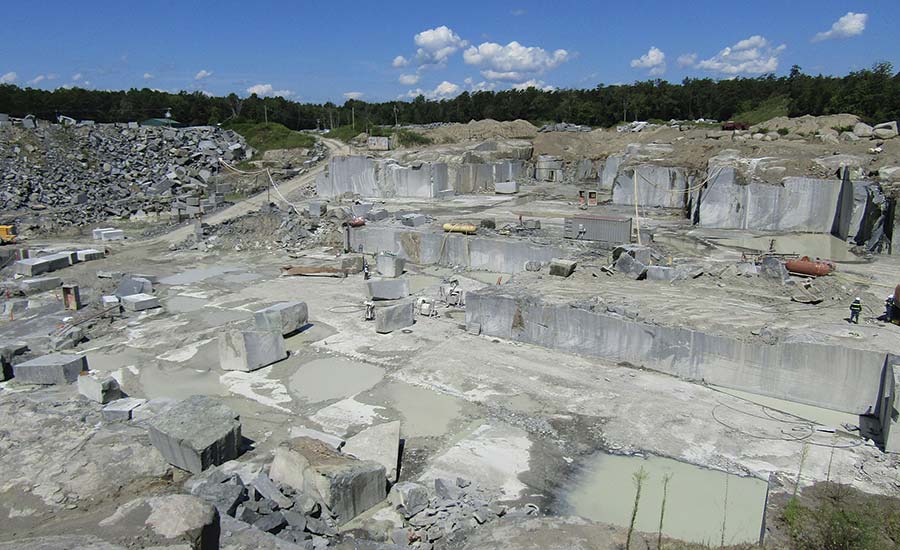A Journey Through Granite Quarries in South Africa: Introduction Nature's Virtuosity
A Journey Through Granite Quarries in South Africa: Introduction Nature's Virtuosity
Blog Article
Unveiling the Mysteries of Granite Quarrying: Where Stamina and Elegance Meet
The world of granite quarrying is a realm where the raw stamina of nature merges with human creativity to create structures that stand the examination of time with an air of beauty. From the depths of quarries to the careful sprucing up in workshops, the process of transforming granite into architectural wonders is an intricate dancing of tradition and technology. As we peer into the midsts of this ancient craft, we start to uncover the hidden intricacies that shape the extremely significance of our developed environment.
The Origins of Granite Quarrying
In the record of building background, the origins of granite quarrying are shrouded in a tapestry of old craftsmanship and geological marvels. Dating back to old Egypt and Mesopotamia, the extraction of granite from quarries marked the beginning of a trip that would at some point result in the production of several of the world's most renowned structures.
Granite quarrying's roots can be mapped to the knowledgeable craftsmens that identified the rock's sturdiness and aesthetic charm. Via a combination of primitive devices and large resolution, these very early quarry employees discovered granite blocks that would become the foundation of civilizations.
As civilizations evolved, so did the strategies of quarrying granite. The Romans, renowned for their design expertise, established sophisticated methods for extracting granite to create monoliths, temples, and roads that stood the examination of time.
The heritage of these ancient quarrying practices remains to form modern-day design, with granite remaining a symbol of toughness and sophistication in building and construction jobs around the globe. (granite quarries in south africa)
Devices of the Quarrying Trade
The evolution of granite quarrying methods from ancient civilizations to modern-day times highlights the essential function played by the tools of the quarrying profession in shaping the industry's techniques. In ancient times, quarrying tools were rudimentary, typically including knives, hammers, and wedges made from materials like bronze or iron. These devices required considerable workforce and time to remove granite blocks from quarries.

In addition, the intro of pneumatically-driven devices and high-powered equipment has actually dramatically lowered the physical labor called for in quarrying procedures, boosting employee security and efficiency. As the quarrying market proceeds to innovate, the devices of the profession remain at the forefront of driving progress and forming the future of granite removal.
Drawing Out Blocks of Granite
Using precision machinery and progressed strategies, the removal of granite obstructs from quarries has become a sophisticated process in the modern-day quarrying sector. The preliminary step involves recognizing the area and size of the granite deposit to establish one of the most effective extraction method. As soon as an appropriate site is picked, the removal process starts with the boring of holes for the positioning of dynamites. Controlled blasting strategies are then employed to disintegrate the granite into manageable areas.

Sprucing Up and Completing Techniques
To attain a flawless surface on granite blocks, competent artisans utilize a collection of precise sprucing up and ending up methods. After the preliminary removal and forming processes, the granite obstructs undertake an extensive sprucing up stage to enhance their all-natural beauty blog and durability.
In enhancement to sprucing up, finishing methods are related to further improve the granite's appearance. These techniques might consist of flaming, refining, or brushing, each offering distinct structures and surfaces to fit various visual preferences. Flaming, as an example, includes exposing the granite surface area to heats to create a rough, textured surface, suitable for exterior applications where slip-resistance is essential. Developing, on the other hand, supplies a matte surface that is smooth to the touch, excellent for interior kitchen counters and flooring. By carefully selecting and applying these polishing and finishing techniques, artisans can transform raw granite blocks into beautiful pieces that showcase both strength and beauty.

Ecological Impact and Sustainability
With the expanding focus on environmental awareness in the industry, granite quarrying techniques are increasingly looked at for their effect on natural deposits and lasting sustainability. Quarrying for granite can have significant environmental effects. The extraction procedure often includes using heavy machinery, nitroglycerins, and large amounts of water, causing environment destruction, dirt erosion, and water contamination. In addition, the transportation of granite from quarries to processing centers creates carbon emissions, even more adding to ecological degradation. granite quarries in south africa.
To minimize these influences and ensure sustainability in granite quarrying, market stakeholders are taking on numerous measures. Executing advanced innovations to decrease energy usage and water usage, recovering quarried land for environmental remediation, and promoting accountable sourcing methods are some techniques being employed. Additionally, accreditations such as the Forest Stewardship Council (FSC) and the Leadership in Energy and Environmental Design (LEED) help customers recognize eco pleasant granite products.
Verdict
In conclusion, granite quarrying is a procedure that requires specialized devices and techniques to extract blocks of granite and polish check them to a high degree of finish. While the environmental effect of quarrying can be considerable, efforts are being made to enhance sustainability techniques in the market. On the whole, granite quarrying is a fragile equilibrium between utilizing the stamina and sophistication of this all-natural rock while decreasing its influence navigate to these guys on the environment.
Report this page